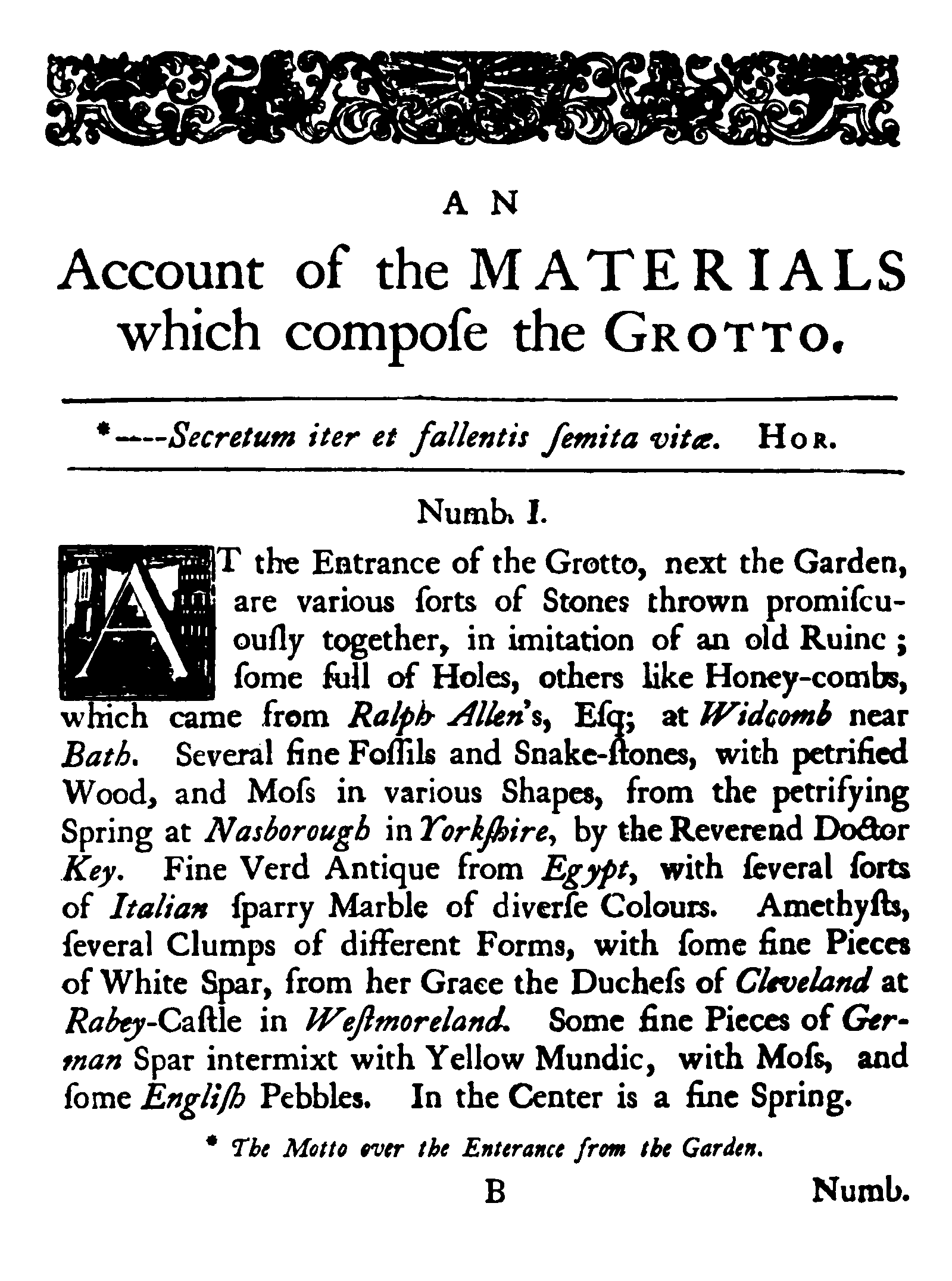
The actual number of specimens and their variety is as yet uncertain. John Serle, Pope's gardener published a description of the grotto in 1745, after Pope has died. Serle described the materials in fairly general terms, probably using written records that Pope had kept. William Borlase, the Cornish natural historian sent at least three shipments of minerals; one of these included a list of over 40 specimens.
The opening page of Serle's account gives a flavour of the contents of the grotto at that time:
